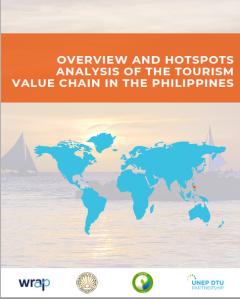
The Overview and Hotspots Analysis of the Tourism Value Chain in the Philippines assesses the environmental hotspots (areas of significant negative environmental impact) associated with the tourism sector in the Philippines. The environmental hotspots identified are broadly split between primary production of food, electricity and fuel use in hotel and the MICE sector (meetings, incentives, conferences and events), and liquid and solid waste generation by hotel and MICE establishments. In order to better understand the location and context for environmental hotspots during this analysis, the tourism value chain for the Philippines was mapped to illustrate how the tourism sector operates, how it is supported by other sectors of the economy (e.g. energy and water supply infrastructure, building and construction, facilities management, food and beverage, transportation), how expenditure in the tourism sector is distributed in the economy and which value chain actors are able to control or influence the environmental hotspots identified during the analysis.
The analysis of expenditure suggests that imports, support services, energy, non-clothing textiles, wooden furniture and food and beverage products are key elements in the Philippines tourism value chain. This suggests that ongoing implementation efforts in the Philippines need to focus on suppliers of domestic goods and services and in some cases those imported from other countries (e.g. dairy products, cereal crops and non-clothing textiles); although this may not be as important for overseas suppliers of most food and beverage products, as the Philippines imports comparatively little food and beverage products (10-13% by weight between 2008 and 2013).
